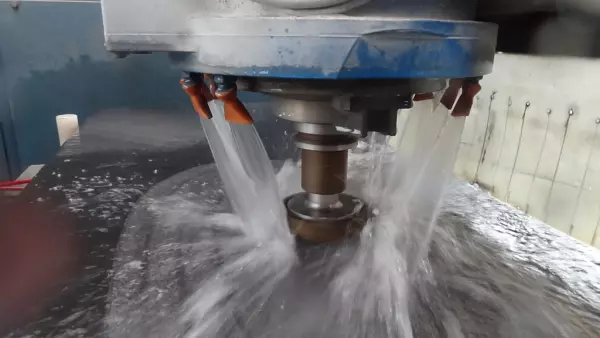
Production for countertops and interior fittings
Today, in addition to natural stone, we also process glass ceramics ( Dekton ), ceramics and quartz...
Portal and digital medical technology fair of the largest MedTech cluster in Germany

Production for countertops and interior fittings
Today, in addition to natural stone, we also process glass ceramics ( Dekton ), ceramics and quartz...

While the composition of glass ceramic implants varies widely, Hench chose a composition of 45% SiO2, 24.5% CaO, and 6% P2O5. This mixture allowed for a large amount of CaO, a small amount of P2O5, and a solid, crystalline silica matrix. In addition, the porous structure of glass ceramics is very stable. The following is a brief description of how a dental technician can use these materials for dental implant applications.
Biodegradable Glass-ceramic-glass-composites are used in a variety of applications. They are used in surgical procedures for bone replacement. The glass-ceramic-glass-compose is biodegradable and can be produced in powder, monolith, or coating forms. Depending on the application, the implants may be in the form of suture anchors, soft tissue anchors, and bone or interference screws. A tissue engineering product, such as a maxillofacial plate or scaffold, can be manufactured with a glass-ceramic-glass composite or coating.
The degradation of glass-ceramic-composites is slow and gradual. During the first 12 weeks after implant placement, a porous silica layer will form on the surface of the implant. This layer will be replaced by regenerated bone tissue, resulting in increased biaxial flexural strength. During this period, glass-ceramic-composites do not undergo drastic changes in properties, and they remain stable long enough for the body to heal itself.
Lithium-di-silicate-reinforced glass-ceramics are biodegradable and have an excellent clinical record. Unlike alumina-ceramics, however, apatite-ceramics are prone to wear and can only be reshaped after their manufacture. The process is also easy to perform, allowing the technician to create complex artefacts.
Aside from phosphate, glass-ceramics are also biodegradable. The US Food and Drug Administration requires that the materials be sterile and biodegradable. They must meet specific requirements to be approved for medical use. The FDA requires that glass-ceramics be manufactured in a clean room. There is a special requirement for sterilization. The FDA is concerned with the safety of dental implants.
A glass-ceramic implant is made of two components: a matrix and the tooth-forming component. The matrix component is composed of calcium silicate, hydroxyapatite, or calcium carbonate. The phosphate and calcium carbonate components are also incorporated in the dental implant. These three materials can be blended to control their properties. The final result is a dental implant that is both durable and aesthetically pleasing.
A glass-ceramic implant is made from a glassy matrix. The crystalline coating is comprised of two distinct layers. The top layer is a calcium- and phosphorus-rich layer has a silica-rich structure. An EDX analysis of the GC620 shows a peak of the material in both C and Pd. The silica is formed from the sputtered coating.
Become a digital exhibitor yourself in the online portal of the largest and best-known MedTech cluster region in Germany and inform the world of medical technology about your products and services as well as about news, events and career opportunities.
With an attractive online profile, we will help you to present yourself professionally on our portal as well as on Google and on social media.